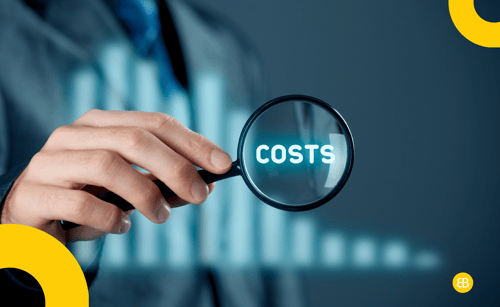Table of Contents
Introduction: Your Website Is Your Digital Storefront
Imagine you’re walking through your local street, and you notice two shops. One has a sleek, modern storefront with clear signage and organized displays, while the other is cluttered and uninviting. Which one would you trust more?
Your website is just like that storefront—your first chance to make an impression. It’s the digital face of your business and often the deciding factor in whether customers choose to engage with you. But here's the kicker: Just like any physical storefront, creating a website comes at a cost.
The question many businesses ask is: How much will it cost to build a website in Australia in 2025? This guide will answer that question in detail, breaking down the key factors that affect website pricing and helping you budget for your next online project.
Let’s dive in and demystify website costs so you can confidently make decisions for your business.
1. Key Factors Affecting Website Costs in Australia
When it comes to website costs, it’s not a one-size-fits-all situation. A wide range of factors can influence how much you’ll spend on your website. Here's what to keep in mind:
Type of Website: What’s Your Business Goal?
Just like choosing a location for a physical store, choosing the right type of website is key. Here are the most common types of websites and what they typically cost:
-
Brochure Websites
A simple, no-frills site that introduces your business online. Costs range from $2,000 – $5,000. Ideal for small businesses wanting to establish an online presence. -
Small Business Websites
These sites include added features like contact forms, service listings, and basic SEO. Expect to pay between $3,000 – $10,000. -
E-commerce Websites
These websites are designed for selling products online and typically cost anywhere from $10,000 – $50,000+. They include product catalogs, payment systems, and shopping carts. -
Custom Web Applications
If you need bespoke functionality like a custom booking system or client portals, custom web applications are what you’ll need. These projects are complex and start around $30,000, going up to $150,000+.
Features & Functionality: The More You Need, the Higher the Price
Adding features such as payment systems, member logins, or integrations with tools like CRMs or email marketing platforms can increase the cost. Think about the essential functions your business needs now—and the ones you might need as it grows. Here’s a quick rundown:
-
Basic Features: Contact forms, basic SEO, and a simple blog.
-
Advanced Features: Custom checkout systems, inventory management, or customer dashboards.
-
Complex Features: Third-party integrations, live chat, multi-language support.
As you add more complexity, the price will rise. But remember, investing in the right features means a more functional and scalable website.
Design & Customisation: Stand Out with a Unique Look
The design of your website plays a crucial role in the way customers perceive your business. When choosing between template-based or custom design, here’s what to consider:
-
Template Design
Budget-friendly and quicker to launch, but often lacks originality. Prices typically range from $2,000 – $5,000. -
Custom Design
A tailored website that fits your brand perfectly. Custom design gives you complete control over user experience and visuals, often costing between $5,000 – $25,000.
If your goal is to make a unique first impression and provide an exceptional user experience, a custom design is worth the investment.
2. Website Pricing Models: How to Pay for Your Website

Once you understand what type of website and features you need, it's time to look at how you'll pay. Here are the pricing models commonly used in the industry:
Fixed-Price Model
In this model, you agree on a set price with your developer or agency before the project begins. It works well for well-defined projects with clear requirements, such as brochure websites.
Hourly Rate Model
If your project isn’t clearly defined, or if you need ongoing work, the hourly rate model might be more suitable. The average hourly rate for web developers in Australia is between $75 – $200/hour.
Subscription Model
If you’re looking for ongoing support and maintenance (including updates, security patches, and hosting), the subscription model is a great option. It ensures your website stays updated without breaking your budget.
3. Website Cost Breakdown by Type: Practical Figures for Every Business
To make the decision easier, here’s a cost breakdown for different types of websites you might need in 2025. These figures are based on Australian market trends:
| Website Type | Cost Range (AUD) | Best For |
|---|---|---|
| Brochure Website | $2,000 – $5,000 | Small businesses needing a simple online presence. |
| Small Business Website | $3,000 – $10,000 | Service providers, local businesses, personal brands. |
| E-commerce Website | $10,000 – $50,000+ | Retail businesses, online stores. |
| Custom Web Application | $30,000 – $150,000+ | Businesses requiring bespoke solutions. |
Real-Life Example: A Local Plumber’s Website
For a local plumber looking to build a simple brochure-style website that includes services, pricing, and a contact form, the typical cost would fall between $3,000 – $6,000. This budget would cover basic SEO to help the business rank on local searches.
4. Hidden Costs to Be Aware Of

You’ve set your budget, but don’t forget about these hidden costs that may surprise you later:
-
Domain Registration: Around $10 – $20/year.
-
Web Hosting: Costs can range from $20 – $200/month, depending on your website’s size and traffic.
-
SSL Certificates: Essential for secure transactions, typically costing $100 – $300/year.
-
Third-Party Integrations: Services like payment gateways, CRM systems, and email marketing platforms often have additional fees.
-
Ongoing Maintenance & SEO: Expect to spend $1,000 – $5,000/year for maintenance and search engine optimization.
5. Maximising ROI: Getting the Best Value Out of Your Website
A website is more than just a digital business card; it’s a powerful tool for growth. To make sure you're getting the most out of your website investment, follow these tips:
Set Clear Goals
What do you want your website to accomplish? Whether it’s generating leads, boosting sales, or increasing brand visibility, setting clear, measurable goals will help you tailor your site to achieve those objectives.
Work with a Trusted Developer
Choose a reliable web developer who understands your business and can provide ongoing support. Look for someone with a proven track record in building websites that drive results.
Focus on SEO & User Experience
SEO is an investment, not a one-time task. Optimising your website for search engines will bring in organic traffic for years to come. Likewise, a great user experience (UX) keeps visitors engaged and encourages them to convert into customers.
6. Conclusion: Start Your Website Journey Today
Building a website is one of the most impactful investments you can make for your business. It’s a tool that drives sales, boosts brand visibility, and enhances customer engagement. By understanding the costs and maximising your investment, you can ensure your website will work hard for you long-term.
At EB Pearls, we’re experts at building high-quality, custom websites that deliver real value. Ready to take the next step? Contact us today for a tailored consultation, and let us help you build a website that works for your business in 2025 and beyond.
Frequently Asked Questions
How much does it cost to build an e-commerce website in Australia?
How long does it take to develop a website in Australia?
Are there ongoing costs for a website after it’s built?

Akash, COO at EB Pearls, blends technical expertise with business acumen, driving the creation of successful products for clients.
Read more Articles by this Author